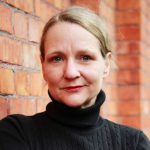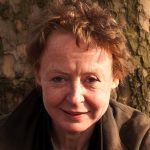With WEATHER HOUSE I was interested in creating a film where the characteristics of weather itself, such as atmosphere and temperature shifts, are equally important as plot and character. The film that emerged takes viewers on a strange voyage, one which mirrors the long voyage making the film.
The starting point was a residency from the Goethe Institute, which enabled me to travel from Berlin to Los Angeles and work with Mark Johnson (writer). Since he had relocated to Los Angeles from Europe, we could only interact from afar. It was great to work together in person again.
When we began developing concepts for WEATHER HOUSE, Mark and I imagined a world enduring abrupt and extreme weather shifts, where temperatures rise and drop as much as 30 degrees in 10 minutes and where humans are being driven to the verge of extinction. And, most importantly, we imagined a film in which there is no hero to save the day. In fact, by struggling to make things better, the characters are more likely to make things worse.
One day we drove to The Museum of Jurassic Technology, where I became fascinated by the miniature dioramas and their displays of fake science. The little stages were so specific and detailed, yet at the same time they created whole worlds. This led us to the Germanic folk art custom of building hygrometers in the form of small, handcrafted houses with figures that emerge according to specific weather conditions. Such a device is called in German “Wetterhaus”, literally “weather house” Questions came up such as: How do you predict or control a constantly changing situation? What should you do and what would it be better not to do? We pictured the weather house in the movie as, in some sense, an enlarged version of the “Wetterhaus”. Trapped inside, the figures occupy themselves with less than useful activities to provide measurements of normality. Everyday things are perceived in a new light and with a new significance. This, combined with the occasional clumsiness and artificiality of the figures, led us to the edge of comedy and horror.
A trip to Joshua Tree National Park raised questions on our own perceptions of nature. Wandering through the desert, we felt so foreign that it seemed to us like we were walking through a film set. How close could we really get to nature? This feeling of estrangement was ironically amplified later on a stop in Las Vegas, as we walked under projected skies and through fake nature settings in casinos.
Ultimately, nature interested us as a presence itself, a place where humans may no longer be able to get to, but which they may only think and dream about. In the film characters are isolated from their natural environment and are rarely seen in it. As it happened, Eric Schefter (co-director) and I, and the whole production crew, lived this idea through the filming process, during which we shot for twelve continuous days in a tiny house in Seehausen, a small village in former East Germany. We didn’t shoot a single exterior scene in the beautiful landscape that surrounded the town, and had no time to enjoy the nature around us. It was as if we were hermetically sealed in that house. All the nature shots were done much later in different locations, without actors. We ended up with very separate worlds that we could then juxtapose in post-production. The final film reinforces this disconnect through sound design and editing. In WEATHER HOUSE nature is indifferent to human presence. Nature prevails.













